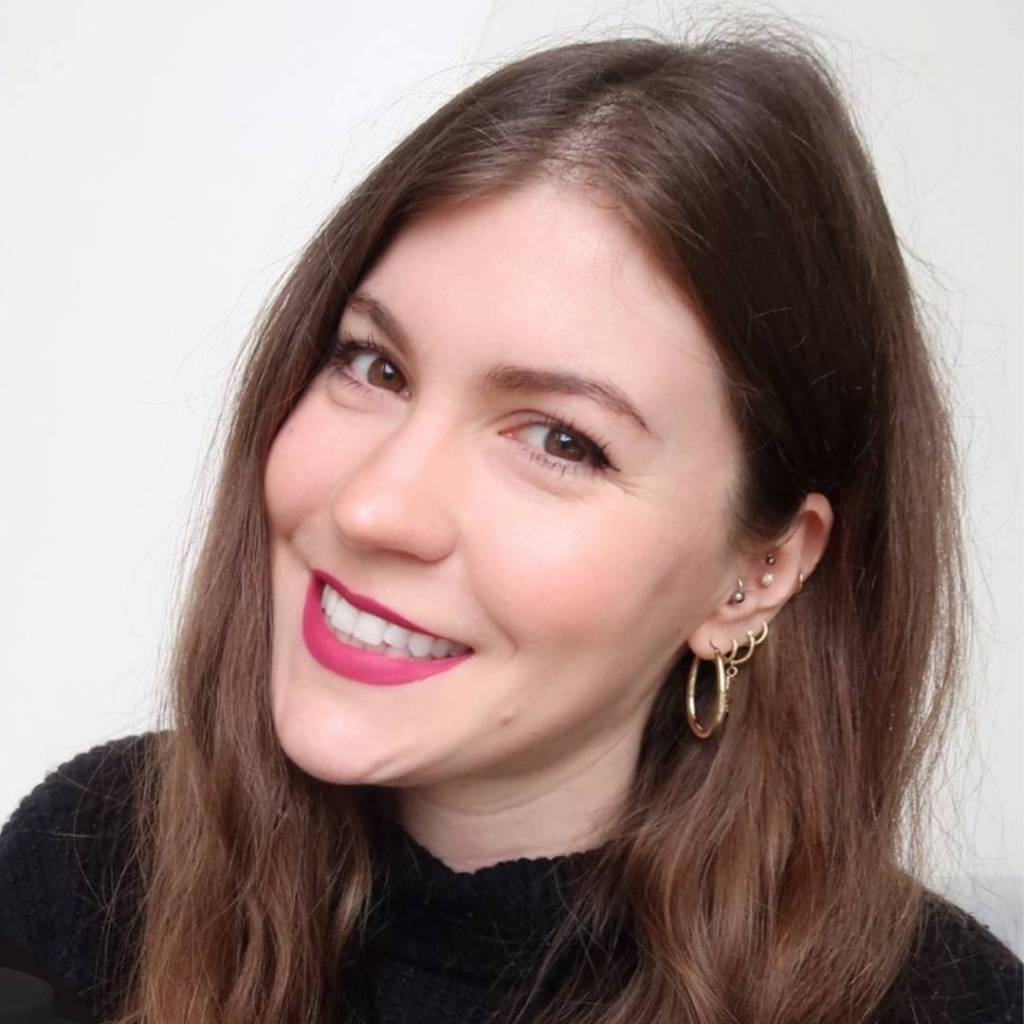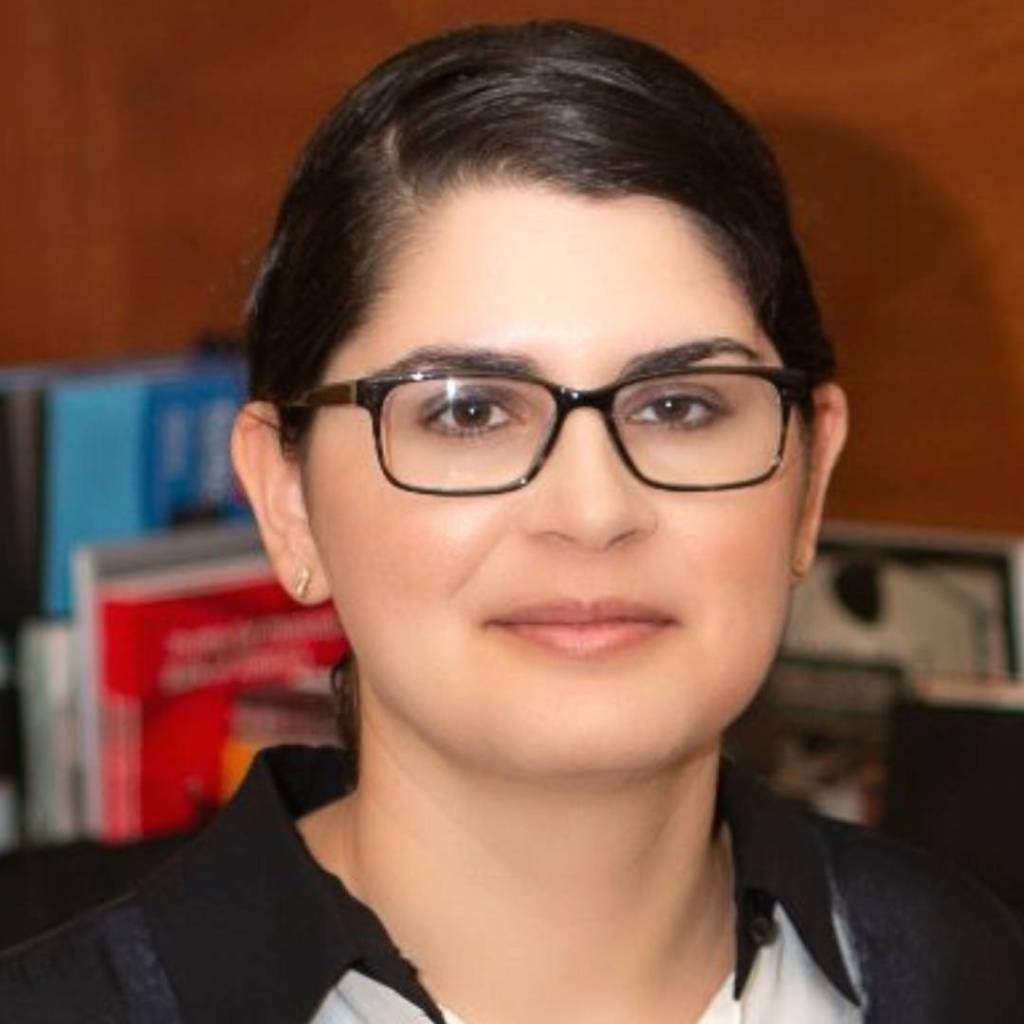Academic YouTubers Talk About Getting Started on YouTube
Susan Heavey, Franziska Sattler, Nichole Lewis, and Erika Romero talk about YouTube
Academics and scientists are using YouTube to share video content. In this featured interview, I talk with the founders of the Academic YouTubers community: Susan Heavey, Franziska Sattler, Nichole Lewis, and Erika Romero.
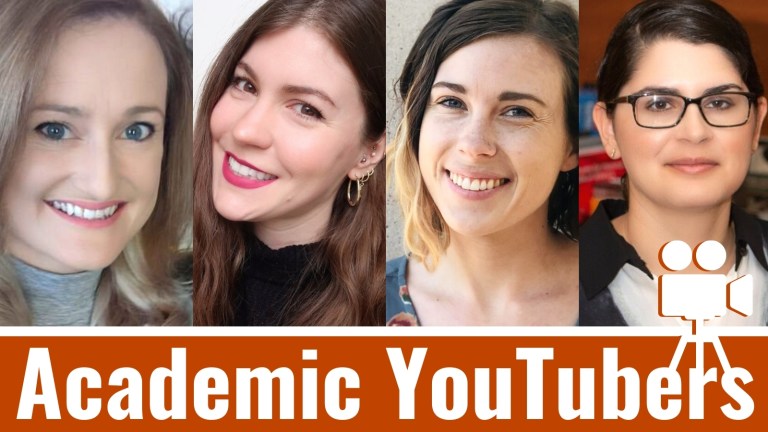
YouTube has been a social media platform since 2005. It was originally created to share home videos. YouTube has 2+ billion users each month, which is almost 1/3 of internet users. The 1st video uploaded to YouTube was only 18 seconds. It was a video of Jawed Karim, one of YouTube’s founders, at the San Diego Zoo. The cool thing about elephants, Jawed says on the video, is that they have “really, really, really long trunks.”
What about the guy who filmed that video? Yakov Lapitsky was a University of Delware doctoral student visiting California for an academic conference. He was a high school friend of Jawed. I was delighted to find the 1st video on YouTube was filmed by an academic!
Lapitsky said, “I was trying to finish my dissertation at the time and getting e-mails like this every 15 to 30 minutes was a fun distraction,” (Toledo Blade).
I’m Jennifer van Alstyne. Welcome to The Social Academic blog where I share advice and interviews about managing your online presence.
Virtual. Self-paced. Choose your own adventure.
Free online presence workshop
For this featured interview, I spoke with four women who’ve come together to create community for Academic YouTubers on Twitter.
Meet the Academic YouTubers:
- Susan Heavey
- Franziska Sattler
- Nichole Lewis
- Erika Romero
Read their bios and see their YouTube channels (scroll to ‘Bios’).
Academic YouTubers (@YTAcademics) is a great place on Twitter to find grad students, professors, and researchers who have YouTube channels. With themed days like #MethodMonday, aimed sharing YouTube tips and advice, this community was one I knew I had to share with you.
Have you ever wondered what it’s like to be a video?
Have you thought about starting your own YouTube channel?
Meet the Academic YouTubers
Subscribe to the interview series on Spotify | YouTube | TuneIn | ListenNotes | Blubrry
The Academic YouTubers talk about how they met on Twitter. “I was a #FollowFriday,” said Erika Romero (3:45).
“We were all chit-chatting and saying wouldn’t it be great if there was a hashtag for people who do academic stuff on YouTube,” Susan Heavey chimed in. “One thing led to another,” and the @YTAcademics account on Twitter was created. The hashtag they came up with is #AcademicYouTube.
I asked the Academic YouTuber how they got started on YouTube. And we talked about how long it took from recording their 1st videos to actually posting them (5:07).
Watch each YouTuber introduce their channel
Click on the headshots below to watch each Academic YouTuber introduce their channel.
10 tips for academics on YouTube
There are so many tips in this interview to help you get started on YouTube.
- Making a YouTube channel is a learning process.
- Titles and descriptions are important on YouTube because they help people know what to expect.
- A YouTube channel takes more time than you might think.
- You can learn new skills by sharing videos on YouTube.
- When you release your video can make a difference.
- How quickly your channel grows will change over time.
- Good content is usually timely or evergreen.
- How often you should share videos will change over time.
- Mistakes in videos are OK.
- It’s important to share your video once it’s live.
Subscribe to The Social Academic blog.
The form above subscribes you to new posts published on The Social Academic blog.
Want emails from Jennifer about building your online presence? Subscribe to her email list.
Looking for the podcast? Subscribe on Spotify.
Prefer to watch videos? Subscribe on YouTube.
1. Making a YouTube channel is a learning process
Everyone learned something about YouTube along their journey (20:25). If you’re just starting YouTube and feel like there’s a lot you don’t know, that’s OK!
Franzi says, “If you have a passion for something and you want to make a video about it, pretty sure there’s going to be someone out there who wants to watch it.”
You don’t need to know everything before you get started.
Tip: Are you an academic on or thinking about YouTube? Follow the @YTAcademics Twitter account for tips. It’s a great community to connect with.
2. Titles and descriptions help people know what to expect on YouTube
On YouTube, you can’t just upload a video and know people will watch. There are things you can do to help your video be seen. Write a clear title and description for your video.
Franzi says, “It’s a lot more putting thought into a nice description, so people know what they get from your video. Or, a title that makes sense. You can’t just upload a video and hope people see it.”
These are things Franzi didn’t think about at first. “It’s been a learning curve,” and that’s ok!
3. A YouTube channel takes more time than you might think
There are more steps to uploading a YouTube video than you might think. Erika says “planning ahead is really key for consistency. Scaffold your content just like you would a course you are teaching.”
Here are some of the steps that go into sharing a video on YouTube:
- Planning
- Recording
- Editing
- Thumbnail design
- Uploading (description, tags, scheduling)
- Sharing
- Monitoring the channel (i.e. comments)
Franzi does vlog-style videos. That means she may need to take additional steps like music and image licensing.
I asked them, how do you plan your YouTube videos (31:22)? Nichole was surprised “how much time and energy goes into script writing.” She shares informational videos that help communicate science. There are a lot of moving parts to her videos like
- edits
- animation
- examples
- video clips
So the planning stage is especially important for her. She found that things didn’t go according to plan: life (and dissertation writing) got in the way of her bi-weekly schedule. Remember to adapt plans to your needs, and that those needs may change over time.
Susan says “the sheer amount of time involved” surprised her. Especially time spent after the video was live. She has to monitor videos to reply to comments and delete SPAM. “Given we’re a sensitive topic, talking about cancer, we do unfortunately get a lot of scam artists.” Susan monitors the video comments to protect her audience from being scammed. She says, “Every single day I have to go on and make sure there’s not something dodgy on there.”
Subscribe to The Social Academic blog.
The form above subscribes you to new posts published on The Social Academic blog.
Want emails from Jennifer about building your online presence? Subscribe to her email list.
Looking for the podcast? Subscribe on Spotify.
Prefer to watch videos? Subscribe on YouTube.
4. You can learn new skills by sharing videos on YouTube
While you can do totally unedited or live videos, many YouTubers learn video editing skills.
There are many skills you can develop by having a YouTube channel
- Being comfortable in front of a camera
- Planning and script writing for video
- Shooting video
- Live video
- Interviewing
- Audio editing/mixing
- Video editing
- Transcribing
- YouTube channel management
- Communicating about yourself and your research
- and more!
Franzi enjoys creating videos so much she furthered her professional development with a copyright law course. YouTube can help you grow in many ways.
“I love trying out new things,” Franzi says. Getting positive feedback from her audience reinforces the learning she does, especially about video editing: “When I try something new and people comment on how nice it looked, I’m like ‘oh yes! I love that.'” Hearing from her audience regularly helps her know “it was worth it putting out that much time into it.”
Nichole noted that the 1st videos especially are a learning curve: “We didn’t realize I was out of frame, so the whole video was from my eyebrows down.” Nichole and her fiancé (who helps her shoot video for Bio Corner) are “kind of paranoid” in their framing now. “Take one step back, now forward. Just like really getting it perfect,” so that framing mistake never happens again. When you expect there to be mistakes the first few times, it helps you plan better!
Learning new skills can improve how well your videos perform. It can also improve your process for creating and sharing videos!
Subscribe to The Social Academic blog.
The form above subscribes you to new posts published on The Social Academic blog.
Want emails from Jennifer about building your online presence? Subscribe to her email list.
Looking for the podcast? Subscribe on Spotify.
Prefer to watch videos? Subscribe on YouTube.
5. When you release your video can make a difference
“It was surprising how much of a difference it would make,” Nichole said. If she put a video out on Friday, it got little traffic. Switching to Thursday helped more people see the videos she shares. “That was trickier to nail down than I expected.”
Erika pointed out that the Analytics on YouTube help you know when your audience is on YouTube. So once you’re posting videos to YouTube, you’ll have some data to help you make a decision on the best times for you to post.
Posting at different types of day may help you reach new people. If what you share on YouTube could help or interest people around the world, posting time is less important for you.
6. How quickly your channel grows will change over time
Many people are worried about how many subscribers they have (or social media connections). What’s more important than how many, is who is watching your videos. If your videos are reaching the audience that benefits from them most, that’s a great thing.
“It took me 9 months to get my first 100 subscribers,” Erika said about her channel, Ever Educating. She had been posting about 1 video per week. When she started posting videos more frequently, her subscribers grew quickly, “in 3 months I gained the other 800.”
How quickly you grow will likely change over time. Sometimes it’s because of how frequently you’re sharing videos. Sometimes it’s because your content changes to be better aligned with your audience. Maybe you got better at sharing your videos once they’re posted. Or, you learned more about titles, tags, and descriptions on YouTube helping it reach more people. There are many reasons why how your channel grows over time can change.
7. Good content is usually timely or evergreen
Videos that do well on YouTube are often timely or evergreen. Timely videos are videos that respond to something people are interested in now. These videos are about trending topics, and often answer questions people are curious about now. A good example of this is Nichole’s video in response to something that made Science Twitter “very upset.”
Evergreen videos are about topics that are useful to people now, and likely will still be useful to people later on. If your video could help someone watching now, and someone watching 5 years from now, that’s more of an evergreen video. “Evergreen content,” Erika says, is “things that will always work and be looked for every time.”
Content can be both timely and evergreen. For example, Erika mentions that teachers are often planning their classes in July. So video tips for teachers released in that month will be timely. It can also be evergreen if those videos will be useful again next July too. Erika says, “if there are seasonal elements…structure your channel” and plan videos accordingly.
8. How often you should share videos will change over time
Is there a ‘right amount’ of videos you should share per week on YouTube? YouTube gurus out there may tell you the magic number is 3 videos per week.
Many professors, grad students, and researchers I know don’t have time for that. You put your energy into many things already. So I’m not going to recommend you post every week, or even every month.
All the Academic YouTubers have shared more or fewer videos depending on what fit into their schedules.
Does the algorithm like that? No, not really. But your audience is made up of real people. If you’re sharing video content they want to see, they’ll watch it when you have it ready.
Nichole shares fewer videos, which makes sense! She’s hard at work on her dissertation. Plan your YouTube videos around your life. Not the other way around!
Subscribe to The Social Academic blog.
The form above subscribes you to new posts published on The Social Academic blog.
Want emails from Jennifer about building your online presence? Subscribe to her email list.
Looking for the podcast? Subscribe on Spotify.
Prefer to watch videos? Subscribe on YouTube.
9. Mistakes in videos are OK
You will make a mistake recording your video(s) for YouTube. Maybe you make a mistake while recording. Maybe there’s a spelling error in your Title Screen. Or, you leave a mistake in when editing your video. Mistakes happen, and they’re OK.
“There’s been a few times where I edited a video and I left in a mistake accidently. You have to kind of let these things go. If something happens,” Erika says, “don’t delete the video and start from scratch.” Leave the mistake in!
Many people won’t notice. And those that do? Well sometimes people pay attention when there’s a mistake more!
Pro tip: Want to make your video viewers even more engaged? Let them know about the mistake in the video description. Make it like a scavenger hunt where they comment with the timestamp of the mistake.
Sometimes mistakes happen that we can’t ignore. For example, I ran into an issue when I filmed my first videos. I record my video and audio separately. For that whole set of videos, I didn’t have the correct microphone selected for recording. The result was good video with terrible audio! I had to start over and re-record the entire set.
When mistakes happen, we can learn better for next time. Try making a checklist for the steps you need to make for your video.
9. It’s important to share your video once it’s live
Once you upload your video, it’s important to share it with people who will watch it. Susan says “sharing the videos externally on all the social media sites” is important. So is monitoring where we share videos to ensure we
- answer questions
- respond to comments
- delete SPAM comments
Erika, who has the largest audience on YouTube. She posts across social media. Posting on her blog and sharing with her monthly newsletter has helped her get more views.
Nichole created an Instagram channel for her YouTube channel. It’s more work to create graphics for a new channel because each social media platform uses different sized images.
If you have a personal website, or a website for your lab, sharing the video there is a great idea. You can embed YouTube videos on your website.
Don’t forget about sharing the video in real life. Friends, family, and colleagues may be interested in your videos. Or, may know someone who would benefit from what you share. Nichole says “it’s really cool seeing” friends and family engage with her videos. “It’s been an ego and confidence boost!”
Franzi says “extended family and friends” provide lots of traffic to her videos.
Susan says the videos are helpful to share “when we’re at an event, we can just have videos running in the background.” She’s also shown them during a talk for cancer patients. “Sharing in real life we find fun. I actually enjoy it more than posting to Twitter.”
Erika loves to share links to her videos when it’s relevant at conferences and events. She has a Google spreadsheet with titles and links to her videos. This makes it easy to share.
Followers can share your videos too. Franzi says one video about traveling in Poland got 10,000+ views after being posted to a Reddit. Because the video answered questions travelers may have about this particular area of Poland, lots of people found it helpful!
Tip: Are you an academic sharing video content on YouTube? When you share your video on Twitter, use the #AcademicYouTube hashtag in your tweet to reach more people. @YTAcademics wants to help share your tweet.
Getting started on YouTube
If you’re thinking about sharing videos on YouTube, it’s a lot of work. The Academic YouTubers and I agree it’s worth it. Video can reach a lot of people. It can communicate complex ideas.
Follow @YTAcademics on Twitter. They’re a great community. And if you tag them, they can help you share your YouTube videos!
I hope you found this live interview helpful. While there are many social media platforms to consider, YouTube has the largest audience. Let me know if you decide to share your own videos.
Check out my guest post on why adding video to your personal scientist website can make a big difference for your website visitors.
Subscribe to The Social Academic blog.
The form above subscribes you to new posts published on The Social Academic blog.
Want emails from Jennifer about building your online presence? Subscribe to her email list.
Looking for the podcast? Subscribe on Spotify.
Prefer to watch videos? Subscribe on YouTube.
Bios
Susan Heavey
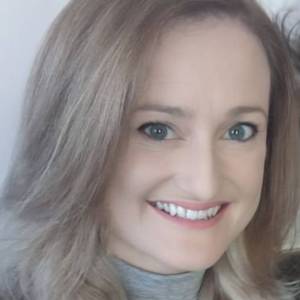
Dr. Susan Heavey is a lecturer in translational medicine at UCL. She is passionate about cancer research, teaching future researchers, and science communication! She loves to engage with the public via ‘Cancer Research Demystified’ on YouTube, and SusanHeavey.blog. She is also one of the founders of @YTAcademics on Twitter, and she has loved working with this brilliant team to highlight, connect and inspire other academic YouTubers!
- YouTube channel: Cancer Research Demystified
- Instagram: @Cancer.Research.Demystified
- LinkedIn: Susan Heavey
Franziska Sattler

Franziska Sattler is a Vertebrate Paleontologist and Biology Master alumna of Freie Universität Berlin. As long as she can remember, Franziska had a passion for science communication, teaching, and International Relations in Higher Education. She has been a year-long volunteer and educator at Pint of Science and Soapbox Science in Germany and has now also taken on the role of communicator at Science Borealis Canada.
Franzi studies dinosaur dentation and until recently worked on Tyrannosaurus rex tooth replacement at the Museum für Naturkunde Berlin, where she now works as a science communicator with her own education format “Science Communication Café (Kaffeeklatsch mit Wissenschaft)”. If you don’t find her tweeting about topics she cares about, she’s most likely busy planning her next travel adventure, taking photographs or reading a book somewhere in a coffee shop.
- YouTube channel: OhYeahFranzi
- Website: Franzi Sattler, MSc
Nichole Lewis
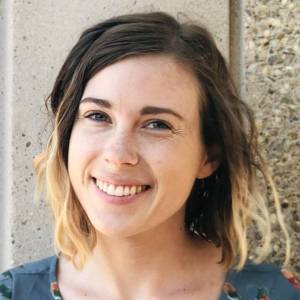
Nichole Lewis is a 5th year graduate student at University of California, Davis working towards her PhD in Biochemistry, Molecular, Cellular, and Developmental Biology. In undergrad she earned a minor in Education which ended up being the first step towards her YouTube channel! Nichole continued to be involved with various science education and outreach activities in graduate school where she fell in love with teaching and science communication.
Family and friends had been encouraging her to make a YouTube channel for a few years when the COVID19 pandemic hit. Suddenly, YouTube was the only way to do the science outreach she enjoyed. And thus, Bio Corner was born! When she is not doing experiments, writing her dissertation, or working on YouTube videos, Nichole enjoys baking, reading, finally getting to see friends again (yay vaccines!), and snuggling with her calico cat Rey who likes to appear in videos from time to time.
- YouTube channel: Bio Corner
- LinkedIn: Nichole Lewis
- Twitter: @Nichole_Lewis_
Erika Romero

Erika Romero is a college professor teaching writing and literature courses to undergrads. She recently earned her PhD in English, specializing in children’s and young adult literature. Her research area focuses on the pedagogical value of teaching children’s and YA lit and their new media adaptations to college students. She runs Ever Educating, a website and YouTube channel that shares teaching tips, tools, ideas, & resources.
Check out Erika’s YouTube video about how to start your channel on YouTube!
- YouTube channel: Ever Educating
- LinkedIn: Erika Romero (she/her)
- Twitter: @EverEducating
Dr. Lapitsky did not immediately respond with a comment.
Free online presence workshop
Get started for in this virtual choose your own adventure workshop for professors, researchers, and graduate students.
Jennifer van Alstyne View All →
Jennifer van Alstyne is a Peruvian-American poet and communications consultant. She founded The Academic Designer LLC to help professors build a strong online presence for their research, teaching, and leadership. Jennifer’s goal is to help people feel confident sharing their work with the world.
Jennifer’s personal website
https://jennifervanalstyne
The Academic Designer LLC
https://theacademicdesigner.com



